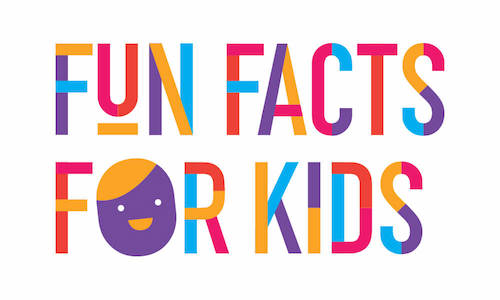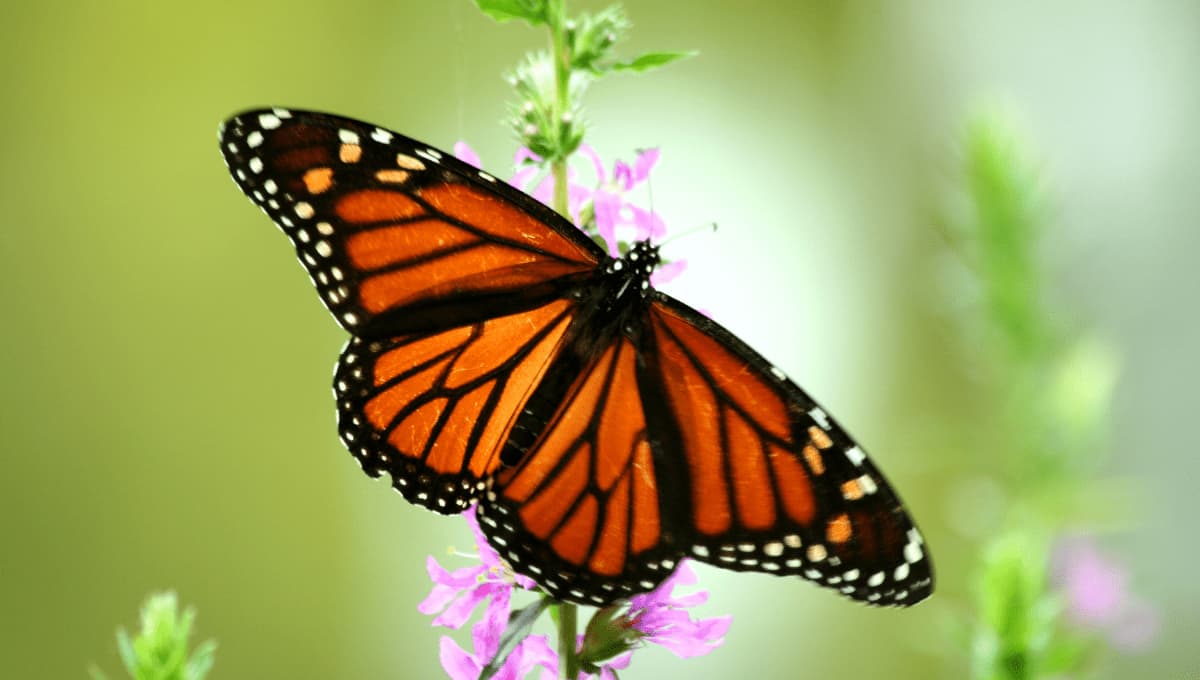Looking for butterflies facts for kids? These delicate creatures flutter around many a backyard, but what do you really know about them? How do they become butterflies and how do they survive?
In this article you will find interesting facts about butterflies for kids and their role in the environment. So, if you are talking about backyard creatures and butterflies in school, or trying to find facts about them for a fun project, this is a good place to start.
ALL ABOUT BUTTERFLIES FACTS FOR KIDS

Some basic information about butterflies for kids:
- What are they?
Butterflies are colourful flying insects that you often see floating around your backyard. They have a set of wings, 6 legs and their body has three sections which includes the chest, tummy and head. They have eyes and antennae which are like two stalks coming out of their heads.
- What is the life cycle of a butterfly?
Butterflies start life as an egg. The female lays eggs on leaves of plants and these eggs, when hatched, will become caterpillars. Hatching time varies between species. Caterpillars are similar to worms but larger and with many little legs. Their purpose is to EAT! They start life by eating the egg shell that they hatch from and continue eating; through leaves, and more leaves. This, in turn, will cause them to grow and often grow up to 100 times bigger than when they first hatched. During this growth spurt, they outgrow their skin and will shed four to five times, giving them shiny new skin each time.
The caterpillar stage will eventually come to an end. It will prepare itself for the transformation into a butterfly.
https://www.high-endrolex.com/14
The next stage is the pupa (otherwise known as chrysalis). The caterpillar effectively transforms itself into a a self made egg. It creates an outer shell that it will stay in for a period of time before emerging as a butterfly. This stage varies in length – several weeks or even months! The outer ‘shell’ will help protect the caterpillar/butterfly from other animals and other dangers such as harsh weather conditions.
- Becoming a butterfly
With all these transformations from an egg to a pupa, finally the butterfly makes an appearance. The butterfly will break open the case. On appearing, the wings are initially wet, so it will wait a while for them to dry before making any moves. The butterfly has been inactive for quite some time, so to get those wings flapping the creature will produce a substance (hemolymph) which helps them be on their way. Once airborne, they will seek out flowers to feed on. The life of a butterfly is relatively short and, dependent on species, can be a matter of just a few weeks.
Check out these awesome butterflies posters for kids!
ARE BUTTERFLIES ENDANGERED?
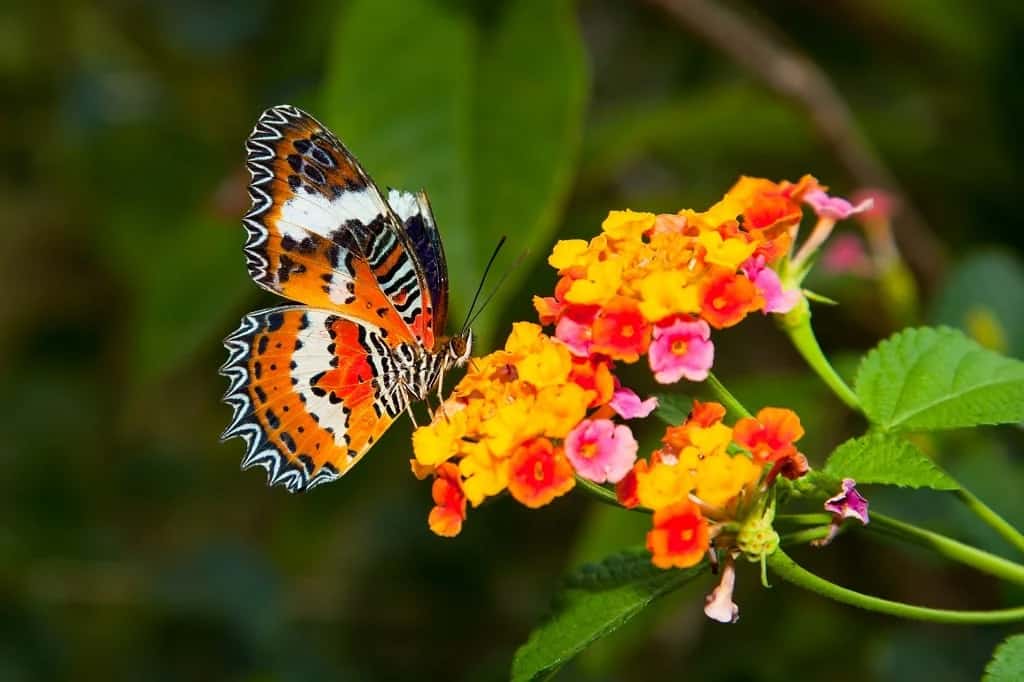
There are vast numbers of different species. In Australia, approximately 400 different varieties exist. A lot of butterflies travel small distances. Referred to as ‘global’ they travel around many countries and regions.
Over the years, external factors have sadly affected butterfly numbers including climate change, pollution and human activities such as rainforest destruction and building works. In 1964, The International Union for Conservation of Nature (IUCN) was set up. IUCN Red List of Threatened Species contains lists of animals that are identified as being in danger.
The Red List contains a number of categories (from the most urgent to the to those of least concern). The categories are:
- Extinct (EX)
- Extinct in the Wild (EW)
- Critically Endangered (CR)
- Endangered (EN)
- Vulnerable (VU)
- Near Threatened (NT)
- Least Concern (LC)
- Data Deficient (DD)
- Not Evaluated (NE)
There are currently a number of butterfly species that appear on The Red List including Pieris Wollastoni (found in Europe on the island of Madeira); Dickson’s Hillside Brown (not been spotted for over 30 years and usually home to South Africa); Agrotis photophila (a native of Hawaii but not spotted in approximately 100 years). All of these are currently listed as ‘critically endangered’, although in some cases, not spotted for some time.
If you would like some butterfly stickers for your school project, click here.
THE MONARCH BUTTERFLY
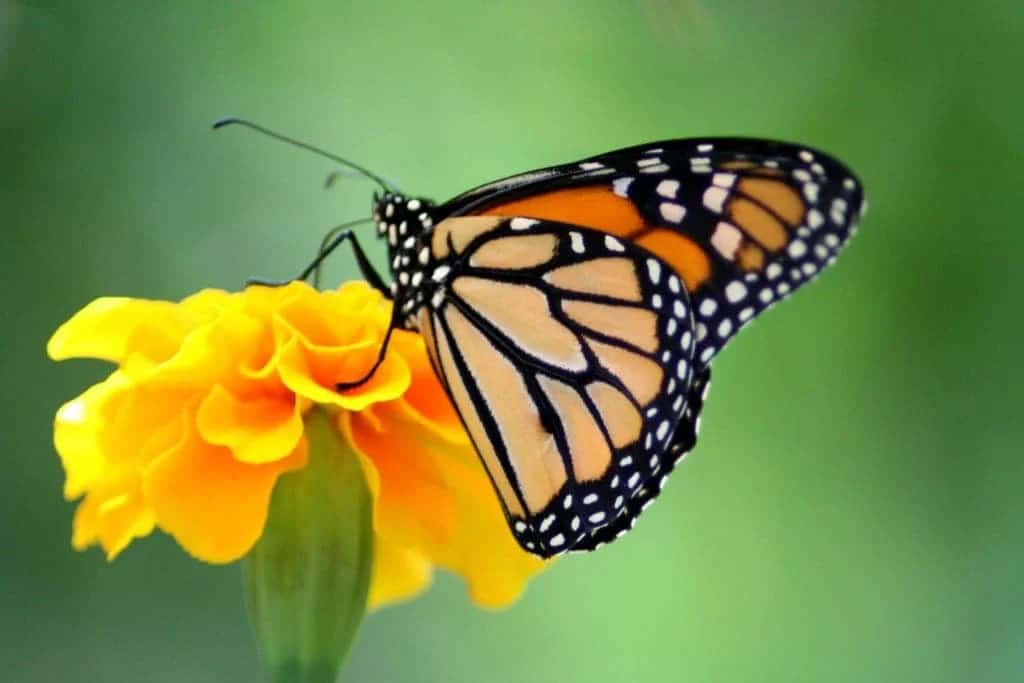
This particular species has been researched in some detail, with quite a bit known about them. Australia introduced the Monarch Butterfly in 1870. Originating in North America. The North American species migrate each year in search of warmer climates. This is quite some spectacle and there will be millions that head to Mexico in the winter. The Monarch butterfly is easily recognised by the pattern on its wings. Mainly yellow to orange with black outlines on the middle section with an outer edge of black containing white dots.
The Monarch butterfly is poisonous to a number of creatures which helps keep it safe (currently not endangered). They feed on milkweed plants.
BUTTERFLIES FACTS FOR KIDS
- Butterflies use their feet to taste!
- Butterflies enjoy the warmth – they are cold blooded creatures so they need the warmth in order to move.
- Butterflies do not chew or crunch their food. They have a straw-like tongue that sucks up liquid.
- Butterflies have skeletons on the outside of their bodies – known as ‘exoskeletons’.
- Antarctica is the only region not to have butterflies.
- There are over 20,000 species of butterflies throughout the world.
- Even though they are colourful, they can only see in red, green and yellow.
- Butterflies range in size with the largest measuring approximately 12 inches.
- Most butterflies emerge during spring.
- There are five categories of species in Australia including Hesperiidae, Lycaenidae, Nymphalidae, Papilonidae and Pieridae.
- The weather causes issues for butterflies. Both rain and wind stops them from flying safely.
- Butterflies hang upside down on plants or trees to rest.
- The term given to a collective group of butterflies (depending on the country) includes kaleidoscope, swarm, flutter or colony.
WHERE CAN I SEE BUTTERFLIES?
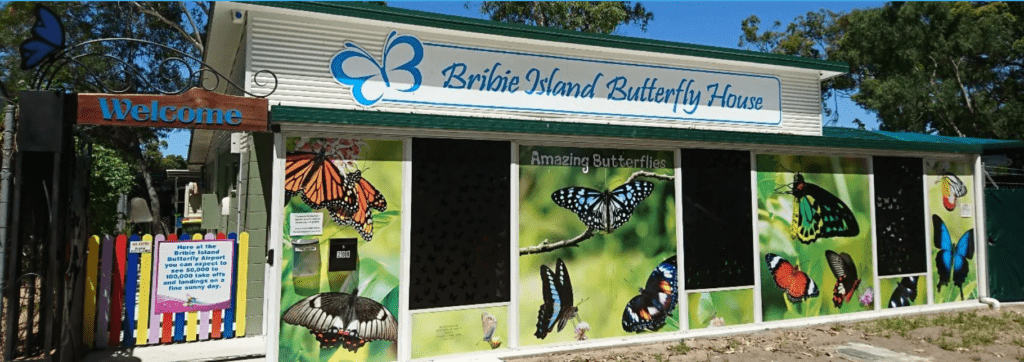
You can often see a range of butterflies in Brisbane and surround suburbs. If you live near Bribie Island, in the Moreton Region, why not visit the Butterfly House on Brisbane Island?
HOW CAN WE HELP BUTTERFLIES?
Like all creatures, they are looking for somewhere safe to live. If you enjoy seeing these beautiful creatures fluttering around your backyard, there are some simple things you can do to encourage them.
A good place to start is by gardening. Butterflies absolutely love brightly coloured flowers, in particular, flowers or plants that are rich in nectar. These types of plants include Banksias, Native Fushsias, Kunzeasa and Bottlebrushes. As mentioned, they also love warmth and sunlight. Creating a habitat of bright nectar-rich plants in sunny areas would hopefully attract them into your yard. Butterflies also love to suck up muddy water! Remember when looking after the plants to entice these creatures, steer clear of any chemicals or pesticides.
Another great source of information is your local library, or there may be some nature/botanical gardens you can visit. They will have an abundance of brightly coloured plants that have some fluttering creatures visit. Many locations have butterfly houses that help provide research and understanding to the species.
A simple scavenger hunt in your own backyard or on a walk can help you spot the environments that they enjoy. There are many that you can print or look up, and can then use these to cross off what you find (or even take photographs of them in order to identify the species – if you are quick enough!).
You can find out a lot more about butterflies in these great books about butterflies for kids.
MORE FACTS FOR KIDS
If you are looking for more great facts for kids to help with projects, check out our articles:
Animal facts for kids
- Quokka Facts for Kids
- Ant Facts for Kids
- Crocodile Facts for Kids
- Dolphin Facts for Kids
- Echidna Facts for Kids
- Bee Facts for Kids
- Australia’s Deadliest Animals Facts for Kids
- Cheetah Facts for Kids
- Endangered Animals Facts for Kids
- Kangaroo Facts for Kids
- Possum Facts for Kids
- Koala Facts for Kids
- Dog Facts for Kids
- Cat Facts for Kids
- Dingo Facts for Kids
- Turtle Facts for Kids
- Penguin Facts for Kids
- Whale Facts for Kids
- Wolf Facts for Kids
- Sustainability Facts for Kids
- Recycling Facts for Kids
